Spain floods latest: Deaths soar over 200 in Valencia amid fresh fears of flooding and new rain alert issued
Death toll continues to rise after worst flash floods in three decades sweeps across Spanish region of Valencia
Your support helps us to tell the story
From reproductive rights to climate change to Big Tech, The Independent is on the ground when the story is developing. Whether it's investigating the financials of Elon Musk's pro-Trump PAC or producing our latest documentary, 'The A Word', which shines a light on the American women fighting for reproductive rights, we know how important it is to parse out the facts from the messaging.
At such a critical moment in US history, we need reporters on the ground. Your donation allows us to keep sending journalists to speak to both sides of the story.
The Independent is trusted by Americans across the entire political spectrum. And unlike many other quality news outlets, we choose not to lock Americans out of our reporting and analysis with paywalls. We believe quality journalism should be available to everyone, paid for by those who can afford it.
Your support makes all the difference.The number of those killed in catastrophic flash flooding in Spain has soared to at least 205, as fresh weather warnings for rain prompt fears of further flooding.
The death toll rose significantly on Friday as rescue workers continued to search for missing people. 202 of those killed were in the hardest-hit region of Valencia alone.
Spain’s state weather agency, Aemet, has issued the most severe kind of weather alert in the south west of the country as the province of Huelva was hit by torrential rain.
Those impacted the worst by the flash flooding in eastern Spain are also expecting more rain, as yellow and amber weather warnings remain in place.
The country is in its second day of an official three-day national mourning, with flags at half-mast on official buildings.
Spain’s prime minister Pedro Sanchez urged residents to stay at home as he warned devastation is “not finished” on Thursday and declared the worst impacted province of Valencia a “disaster zone”.
Red alert lifted in Spanish region
A red alert in the Spanish region of Huelva has been lifted by the State Meteorological Agency (Aemet), which had been in place since early Friday morning.
Orange warnings have also been lifted in Castellon and Tarragona, while orange warnings remain in place for Huelva and the Balearic Islands.
Situation ‘unbelievable’ with streets filled with debris and vehicles, says local
The damage from the storm has recalled the aftermath of a tsunami, with survivors left to pick up the pieces as they mourn loved ones lost in Spain’s deadliest natural disaster in living memory. Many streets were still blocked by piled-up vehicles and debris, in some cases trapping residents in their homes. Some places still don’t have electricity, running water, or stable telephone connections.
“The situation is unbelievable. It’s a disaster and there is very little help,” said Emilio Cuartero, in Masanasa, on the outskirts of Valencia city. “We need machinery, cranes, so that the sites can be accessed. We need a lot of help. And bread and water.”
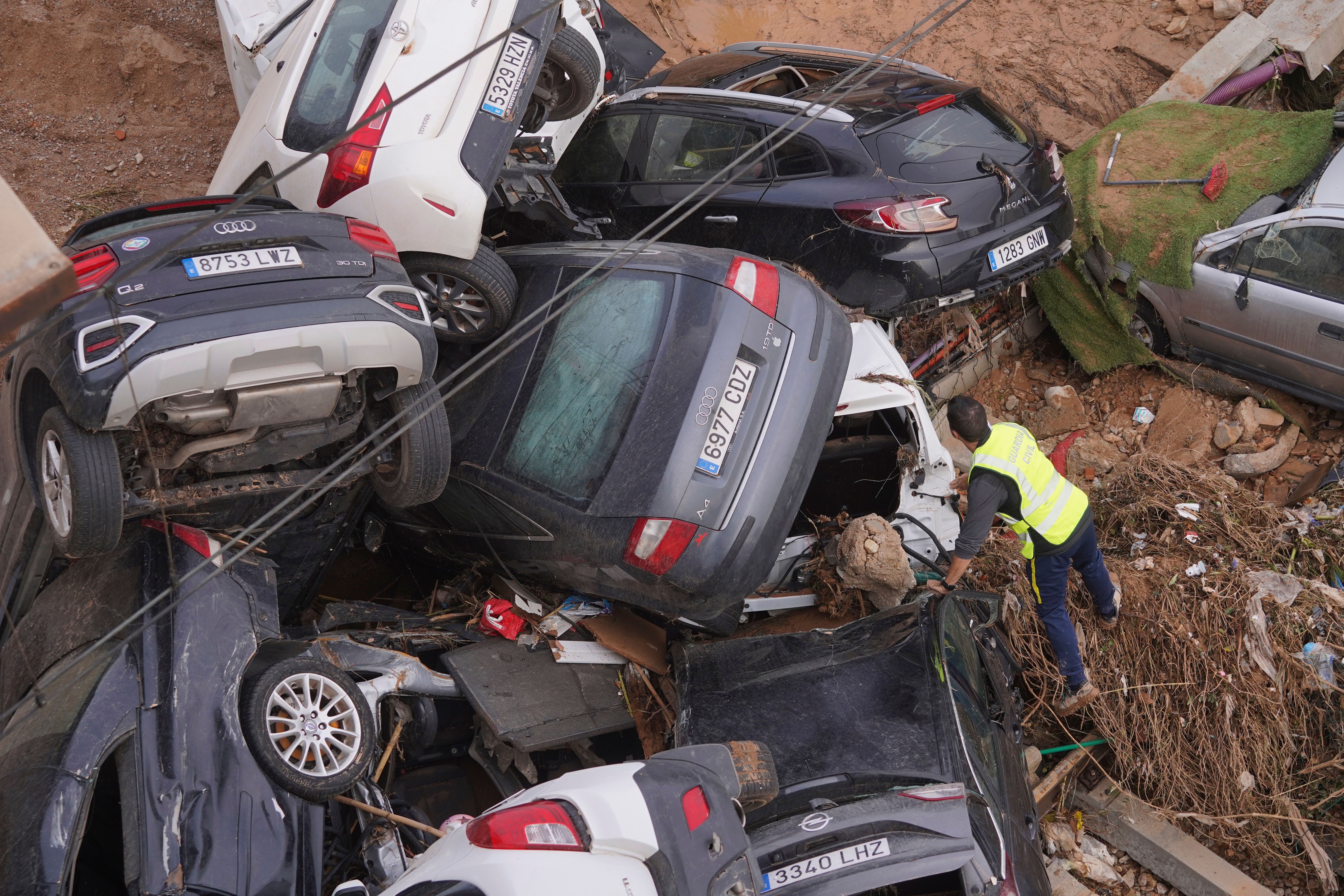
In Chiva, residents were clearing debris from mud-filled streets. The Valencian town received more rain in eight hours on Tuesday than it had in the preceding 20 months, and water overflowed a gully that crosses the town, tearing up roads and homes.
The mayor, Amparo Fort, told RNE radio that “entire houses have disappeared, we don’t know if there were people inside or not.”
Human-driven climate change fuelling extreme weather
The tragedy is already Spain’s worst flood-related disaster in modern history, and meteorologists say human-driven climate change is making such extreme weather events more frequent and destructive.
In 2021, at least 185 people died in heavy flooding in Germany. Prior to that, 209 people died in Romania in 1970 and floods in Portugal in 1967 killed nearly 500 people.
Research group Climate Central said in a report on Thursday that a low-pressure system behind Spain’s floods had tapped into an “atmospheric river” carrying excess moisture from the unusually warm Tropical Atlantic.
According to its Climate Shift Index: Ocean, human-caused climate change has made these elevated sea surface temperatures at least 50 to 300 times more likely.
Spain floods mapped: Where are weather alerts in force as death toll hits 205?
Weather warnings are in force across swathes of Spain as further storms approach on the heels of devastating flooding which has claimed at least 205 lives – making it the country’s worst natural disaster in living memory.
Prime minister Pedro Sanchez has warned that the devastation caused by flash flooding is “not finished” as he declared Valencia a “disaster zone” on Thursday. Urging residents to remain in their homes, he said: “Right now the most important thing is to safeguard as many lives as possible.”
Cities such as Valencia and Malaga were inundated this week after nearly a year’s worth of rain – close to half a metre – fell in just eight hours in some areas, leaving residents “trapped like rats” in homes and cars, as described by one desperate local mayor recalling the chaos.
Andy Gregory reports:

Spain floods mapped: Where are weather alerts in force as death toll hits 158?
New weather warnings issued in dozens of areas in Spain as prime minister warns devastation from flooding is ‘not finished’
The bridge of solidarity’
People in Valencia have transformed dispair into action and are organising marches to deliver vital food and water supplies to neighbouring towns ravaged by the disaster.
Jorge Ramos Tolosa is among hundreds who are crossing the Jorge Meliá Lafarga bridge, which is the only way to reach the nearest towns of Torrent and Paiporta.
The passage has now been transformed into a “bridge of solidarity” to reach those affected by the deadly floods. “We are doing what the regional authorities have not been able to do for days,” he told The Independent.
“The aid is not reaching all the places it should, and this is due to the negligence of the regional President of Valencia.”
The history lecturer from the University of Valencia said the outpouring of support from locals was spontaneous. People filled their bags with water, food and cleaning supplies for the victims and walked miles for hours to deliver the humble aid.
“The solidarity of people is invaluable. Amidst the desolation, devastation and sadness we are experiencing here, it is beautiful and encouraging to see this wave of support,” Mr Tolosa said.
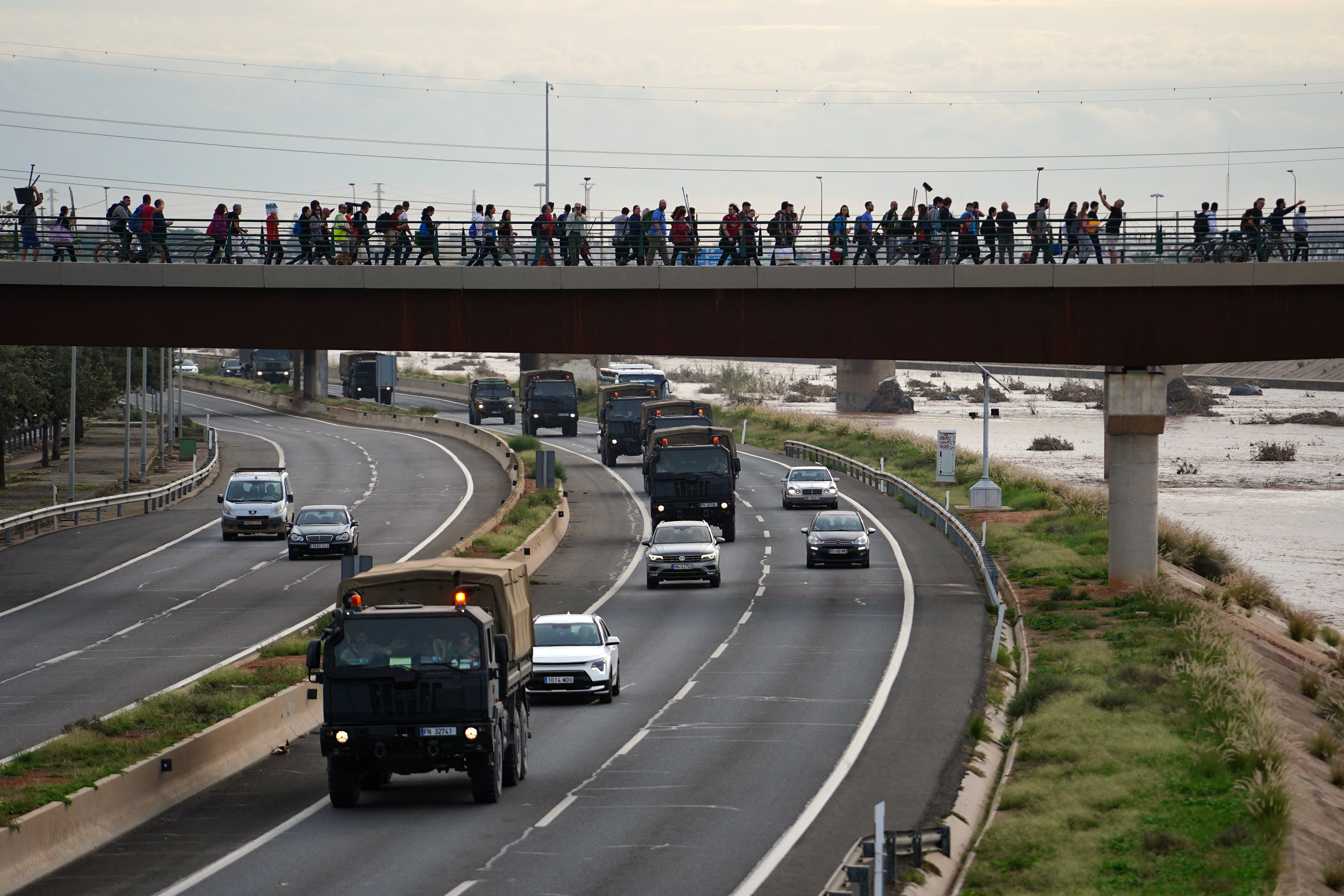
Spain flood victim says her entire home was engulfed in less than 10 minutes
A terrified Valencia flood victim has revealed the scale of the devastation after heavy floodwaters engulfed her home in a matter of minutes.
Alba Paredes Borja is from the Spanish town of Alfafar, one of the areas hardest hit by the deadly storm, where local authorities are calling for urgent help in receiving food, water and medical supplies.
“I’m terrified. Everything looks apocalyptic,” she told The Independent. The floods – known as the “cold drop” or DANA phenomena – have claimed 158 lives, including at least three people in the municipality, leaving the city in ruins and cut off from all communication.
Salma Ouaguira reports:
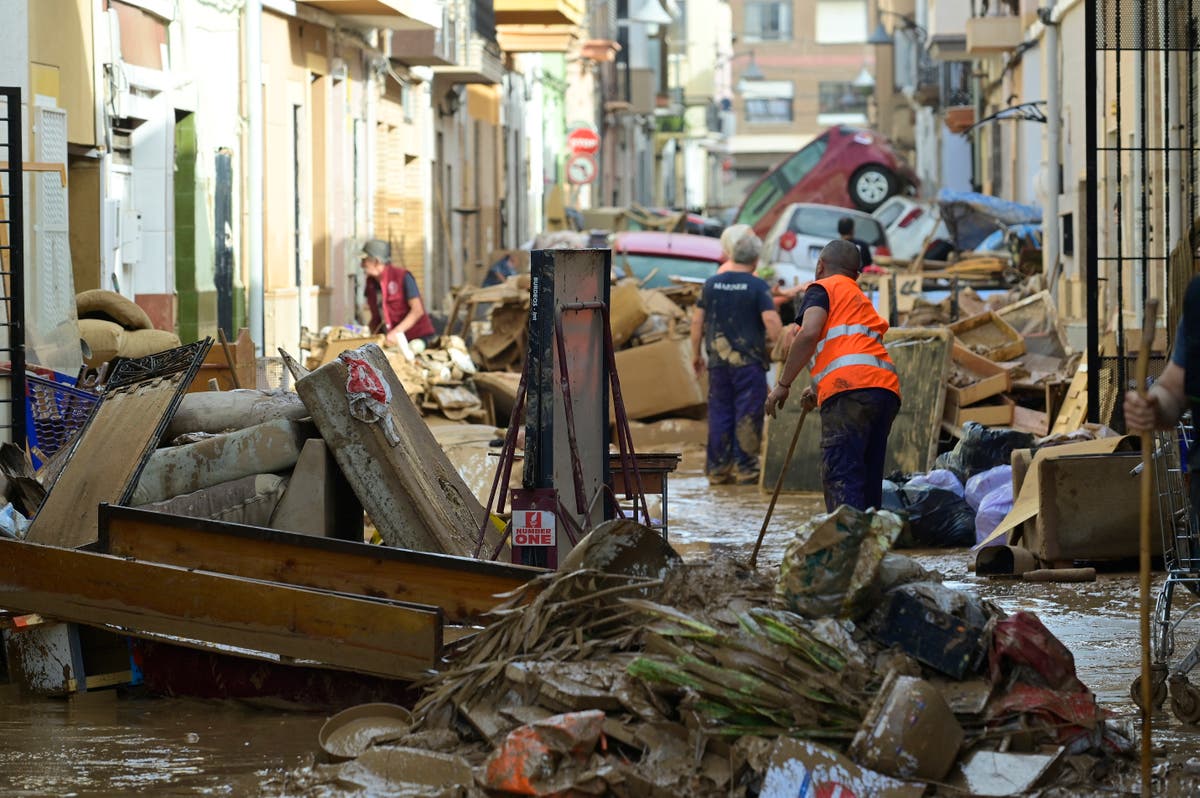
‘Terrified’ Spain flood victim reveals scale of devastation: ‘It’s apocalyptic’
‘By the time they warned homes were flooding, mine was already underwater’
Latest pictures from Spain

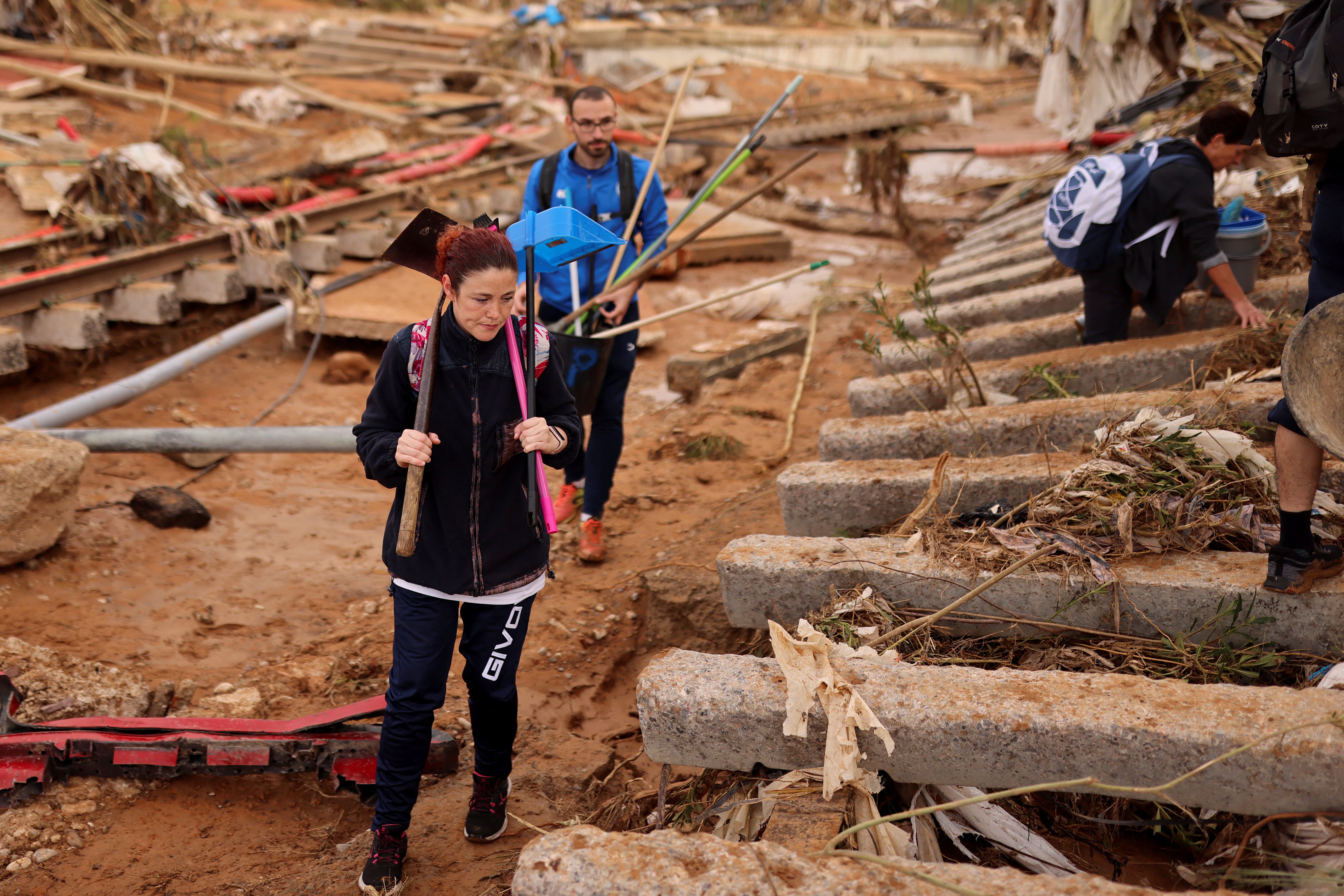
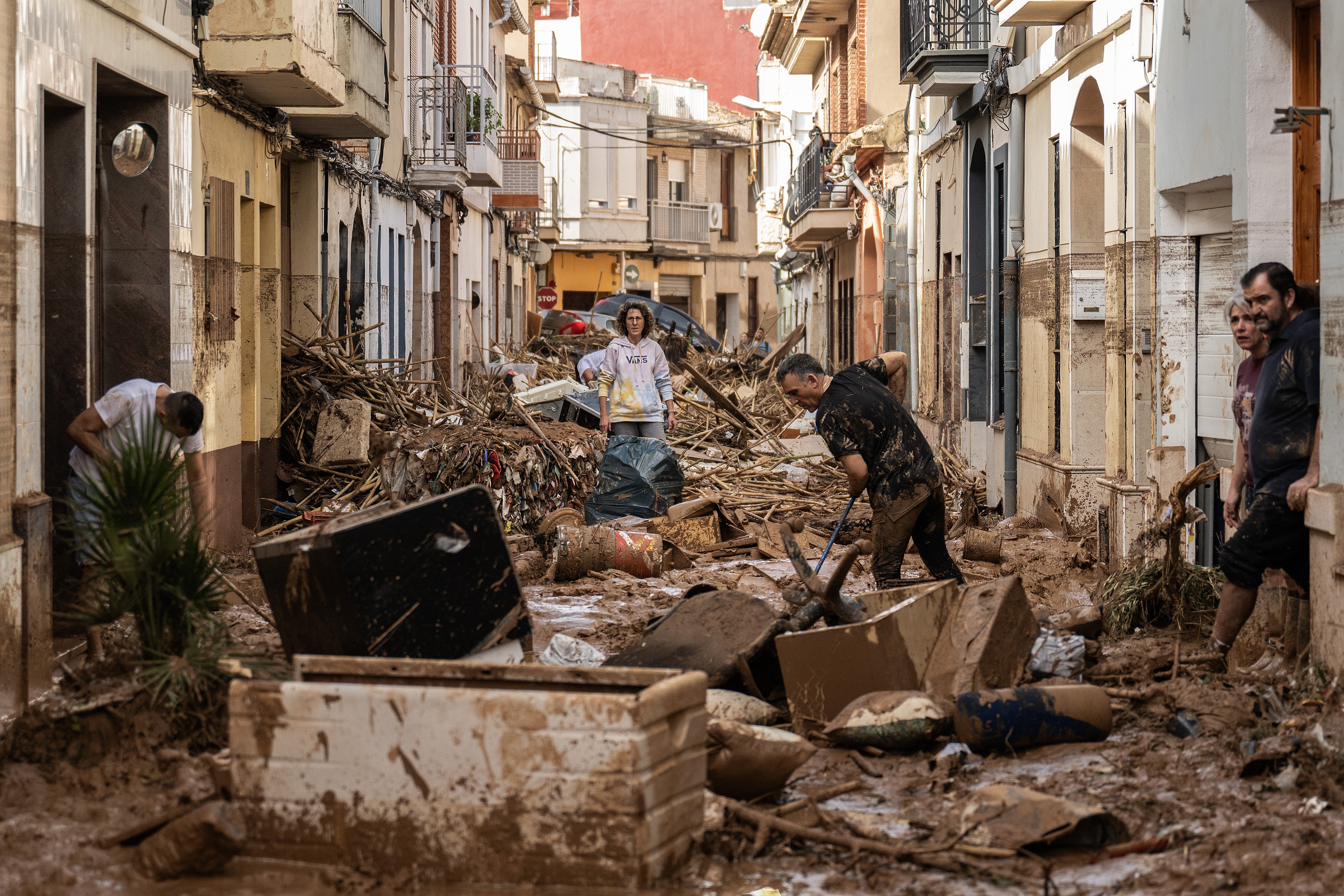
Anger grows over authorities’ handling of crisis
As the shock dissipated, anger grew over the authorities’ handling of the crisis, both for their late warnings of the looming floods and the chaotic relief response.
Many survivors had to walk long distances in sticky mud to find food and water. Most of their cars had been destroyed and the mud, destruction and debris left by the storm made some roads unpassable. Some pushed shopping carts along sodden streets while others carried their children to keep them out of the muck.
Some 150,000 people in Valencia were without electricity on Wednesday, but roughly half had power by Thursday.
An unknown number did not have running water and were relying on whatever bottled water they could find.
The region remained partly isolated with several roads cut off and train lines interrupted, including the high-speed service to Madrid. Officials said it would take two to three weeks to repair that damaged line.
And with emergency personnel focused on recovering the dead, survivors were left to find basic supplies and clean up the mess. Volunteers joined locals in moving wrecked vehicles, removing junk and sweeping mud.
With local services clearly overwhelmed, Valencia regional President Carlos Mazon on Thursday asked if Spain’s army could assist with distributing basic goods to the population. The government in Madrid responded by promising to send in 500 more soldiers, more national police and Civil Guards.
Valencia opens temporary morgue
A temporary morgue has been set up in Valencia as the death toll in the region continues to rise.
Vehicles and personnel from Spain’s Military Emergency Unit (UME) were filmed going in and out of the Feria Valencia building.
The death toll from the flash floods has now risen to 205, with 202 of the victims being in the region of Valencia alone.
Death toll soars to 205
The death toll from the flash floods that destroyed eastern Spain has now risen to 205.
The new number marks a sharp increase in the last official toll of 158, with 202 of the victims being in the region of Valencia alone.
The tragedy is already Spain’s worst flood-related disaster in modern history, and the death toll is now the highest for a single country in Europe since Romania’s floods killed 209 people in 1970.
Subscribe to Independent Premium to bookmark this article
Want to bookmark your favourite articles and stories to read or reference later? Start your Independent Premium subscription today.




Join our commenting forum
Join thought-provoking conversations, follow other Independent readers and see their replies
Comments